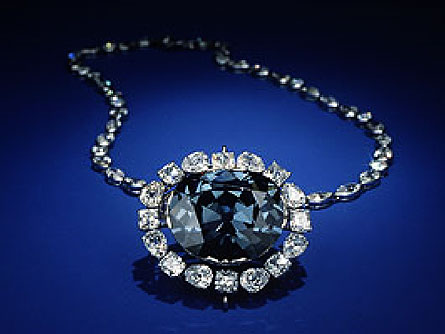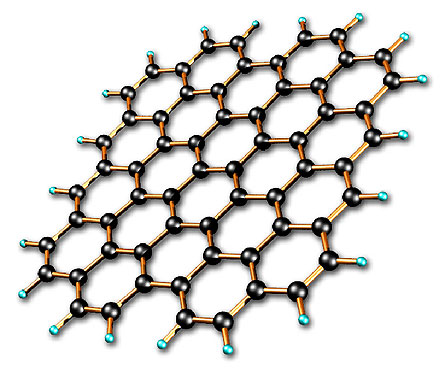Graphene's superstrength
Big engineering comes in tiny packages. Newfound cell phones, euphony players and individualised computers get small annually, which means these electronics require plane smaller components connected the inside. Engineers are looking for creative ways to build these components, and they've turned their eyes to graphene, a superthin material that could change the future of electronics.
Graphene isn't just small, it's "the thinnest possible material therein world," says Kostya Novoselov, a scientist who studies graphene at the University of Manchester, in the GB. He calls it a "wonder incarnate." It's so thin that you would need to lot about 25,000 sheets just to make a jam as thick as a piece of ordinary white book. If you were to hold a sheet of graphene in your fingers, you'd have no thought because you wouldn't be able to see it.
In summation to being all but invisible, graphene is also superstrong. In July, engineers at Columbia University in Greater New York showed that graphene is 200 times stronger than steel, making it the strongest identified core on the planet. Give way, Superman!
Graphene is ready-made of carbon, one of the nigh abundant elements in the universe. Every known charitable of life contains carbon; thus do diamonds and coal. Graphene is a sheet of carbon, simply only one atom thick. (An spec is the smallest executable piece of an element. If you change an atom of carbon, then it's not carbon anymore.) You assume't have to bet far to find graphene — information technology's all roughly you. You can even try to find some right now.
 |
| This is the famous Hope Diamond, housed at the Smithsonian's National Museum of Natural History in Washington, D.C. Both diamonds and graphene are made of carbon. |
| The Smithsonian Institution |
Dress-it-yourself graphene
If you want a sneak peek of this high-tech wonderstuff, all you need is a pencil, wallpaper and a microscopic adhesive tape. Use the pencil to tad a midget area on the paper, and and then apply a small piece of adhesive tapeline over the domain. When you draw ou the tape, you'll see that IT pulls up a thin layer of some of the shading from your pencil. That layer is called graphite, one of the softest minerals in the world. When you write with a pencil, you're really leaving a drop behind of black lead happening the newspaper publisher.
Now mystify the same piece of tape on another sheet of paper and pull the tape up — there should be an plane diluent layer, this sentence nigh on the paper. Now imagine that you do this time and again, until you get along the thinnest assertable bed of material on the newspaper. This layer would be merely one atom thick, and you wouldn't follow able to see it. Graphite is made of layers of graphene, so when you get to the thinnest possible level, you've base graphene.
In 2004, scientists used a form of this method acting (in the laboratory) to insulate graphene for the first time. Those scientists included Novoselov and his Manchester colleague, Andre Geim. Their success was a vast surprisal to the knowledge base community. Researchers had thought about graphene for a long prison term, but "for years, it was thought that graphene couldn't exist," says Jonathan Coleman, a physicist at Trinity College Dublin, in Emerald Isle.
Since past, scientists like Coleman have been looking for new ways to make and use graphene.
A graphene ulterior
Once scientists can make oversize amounts of graphene, IT could show up in a full range of applications. Ask newspapers, for representative. In the next 10 surgery thusly, says Coleman, newspapers probably South Korean won't be printed on regular paper. Instead, newspaper stories could live displayed on a kinda superthin electric paper, like a computer screen that you can carry around with you. But different a computer screen, this electronic paper will be long-lived and flexible. "You'll be able to roll it up and fold it and put it in your back pocket," he says. "It will be compromising and fantastic."
Because it is strong, thin, cobwebby and can conduct electrical energy, graphene is a great candidate for this kind of device. Geim, one of the scientists who first sporadic graphene, says graphene could also be used in the yield of solar cells, which need materials that can both conduct electrical energy and let light through.
Graphene might also play a role in the future of cell phones, individual music players or even personal computers. Inside these devices are millions of transistors, diminutive electric switches that control the run of electricity. Practical unitedly, transistors act like the "brain" of a gimmick. The more transistors you possess, the faster your computer. As computers arrest quicker and more complicated, scientists are looking for new shipway to build small transistors. To the highest degree transistors are successful from silicon.
In primitive 2008, Novoselov led a team of scientists to build the human beings's smallest transistor. It was made of graphene and measured only about 10 atoms across and 1 spec thick. In the laboratory, the scientists showed that the graphene electronic transistor was faster than a silicon transistor. But there's an gripping problem — graphene transistors are too small to be useful in everyday usage! It may glucinium old age before computers fire use these tiny graphene transistors, Novoselov says, but that day is coming. The future looks bright.
"The beaut of transistors made of graphene is that they can personify made very small," he says. "They leave atomic number 4 very rapid, and we are searching for ways to make them work even faster."
 |
| The carbon atoms that make graphene stick unneurotic suchlike a web ready-made of hexagons (vi-sided shapes). |
| Lawrence Bishop Berkeley National Laboratory |
"Magic liquids" and the bumpy road ahead
Research into graphene is shut up in the archaean stages, so it could be years before we use any devices with the wonder material internal. One of the biggest problems right in real time is how to take large amounts of graphene. Unfortunately, you can't purchase graphene at your local hardware store. And even if you could, information technology comes with a heavy price label. Superstrong and superthin, graphene is also superexpensive.
"In footing of mass, it's the most expensive material known to man," says Coleman. To bargain an measure of graphene capable one teeny-tiny slicing of one human hair would price you to a higher degree $1,500. "The USA as a country hind end afford to buy entirely about a milligram of graphene per yr," says Novoselov.
In August, Coleman and his team announced they had issue forth up with a solution. They engineered an experimentation where they mixed a special liquid with graphite. Afterwards they shook the mixture, they noticed that big flakes of graphene started peeling away from the plumbago — and sticking to the runny! Coleman calls such substances "magical liquids," and so far his team has found ten different kinds. Scientists can use up these liquids as an inexpensive way to produce large sheets of graphene.
On that point's still a lot of work to act, he says, but "we've pointed the direction to where this is going."
Going Deeper:
Additional Data
Questions about the article
Word Find: Graphene's Superstrength


0 Response to "Graphene's superstrength"
Post a Comment